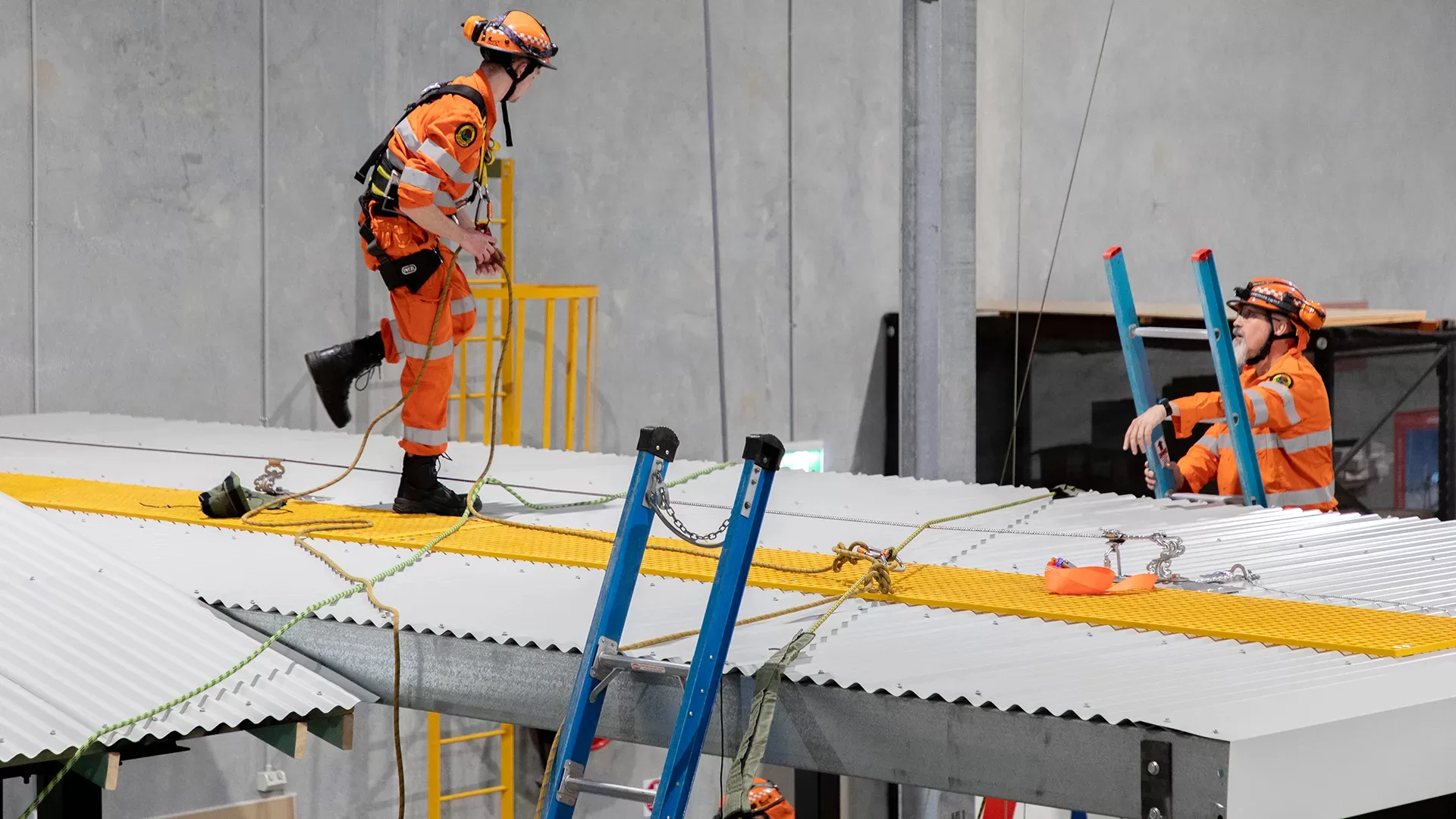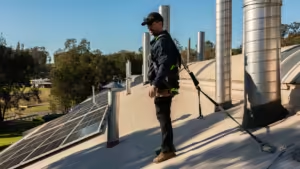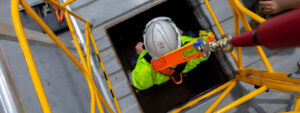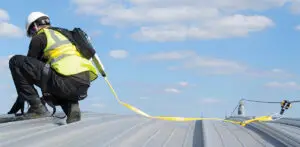There are many situations where a temporary fall protection or safe access system may be needed. In this guide, our experts work through a selection of the most common options available.
There are many situations workers commonly come across where the use of a temporary safety system would be advantageous. Unfortunately, as these situations are usually once-off or very infrequent, the attitude of “she’ll be right” is often taken instead.
The use of a temporary safety system does not have to be complicated or significantly increase the workload needed to complete a task but can make an enormous difference in the likelihood of a severe accident occurring.
Identifying the situations where a temporary safety system may be required forms part of a workplace’s risk assessment and management processes.
In this blog post, our team of experts have put together some of the more common temporary safety system solutions used in a variety of high-risk work environments.
Temporary anchors for metal roofs
Temporary anchors are often used when access to a single-storey roof is needed. Most commonly, this is when a worker attends a domestic house to complete repair work on a TV aerial, install a satellite receiver or solar panel system, complete repair work or something similar.
There are different types of temporary anchor available. Each have their own advantages and disadvantages, that can be considered along with how their installation process fits alongside each workers’ own preferences and work style.
When working with metal roofs, many temporary anchors are attached by removing a sequence of screws, placing the anchor over the holes, and then fixing it by using a slightly larger gauge screw (this is so that it bites into the structure through enlarging the hole. Simply replacing the existing screws will not accomplish this). The worker can then attach a rope line to the anchor, put on a harness and go about their work.
Others work by going underneath the roof sheet at the edge of the roof. A rope line is connected and then thrown over to the other side of the roof. The worker moves around to that opposite side and can connect to the rope there. Once connected, they can complete their work on that side of the roof only.
Anchor straps for tile roofs and other uses

Anchor straps provide an easy way to create a temporary anchor point on tile roofs along with many other locations.
When working on a tile roof, a tile can be slid up exposing the trusses underneath. Sling the anchor strap around a truss and connect it to a rope line. This creates a suitable anchor point allow a worker to safely access the roof and undertake their work while being protected against the risks of a fall.
The versatility of an anchor strap also allows them to be used in other situations as well where a permanent anchor may not be present. This can include places like warehouses, commercial buildings and where plant needs to be accessed for maintenance. Structural steel beams can be commonly used.
Once a suitable piece of structure has been identified, the anchor strap can be wrapped around it and then connected to using a rope line.
Other options for temporary safety at height
Depending on the site being worked at and the type of work being completed, a temporary anchor system may not be the most practicable form of protection for workers.
In those cases, there are often temporary guardrail systems installed that allow workers to freely move across an area, without necessarily needing a harness, whilst protected from the risk of a fall from the edge.
In cases where there are voids in the surface of the area being worked on (for example, an unfinished warehouse roof) netting can often by strung underneath. While netting does not prevent a fall from occurring, it mitigates the risk of an injury resulting from the fall.
Another popular item is the temporary static line. These are a length of webbed strapping that can be slung around suitable pieces of structure and then tensioned using a ratchet. Once tensioned, workers can attach a don a harness and connect to the line using a lanyard.
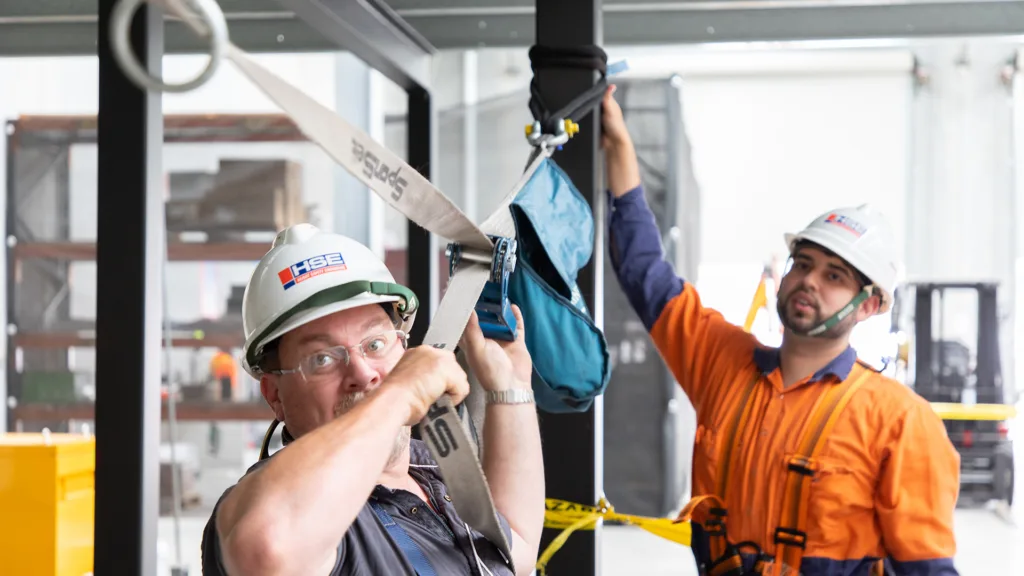
The need for permanent solutions
One of the biggest advantages of a temporary safety system is that they can be cheaper to obtain initially compared to the installation of a fixed or permanent safety system.
And while for many businesses and employers, the need to minimise expenditure and save money is forefront of mind when making decisions, there are circumstances when the use of a temporary safety system would be in breach of duties of care under work health and safety legislation.
Temporary safety systems, especially temporary fall protection systems, should only be used when the work area is only being accessed once. Should an area need to be accessed on a more regular basis, then the installation of a permanent safety system should be undertaken.
In many cases, reusing temporary systems in the same location multiple times over can render the system itself unsafe along with potentially damaging the structure itself.
It is always important that the right safety systems be in place for the job and the environment where the work is being undertaken. If there is uncertainty around what the most practicable solution may be for a given work situation, advice should be sought from a safety expert before any work is started.
Discuss your safety needs with an expert
Height Safety Engineers are the experts at helping business, building owners, employers and contractors find solutions to their workplace safety needs. To find out more, call our team on 1300 884 978 or email enquiries@heightsafety.net.

